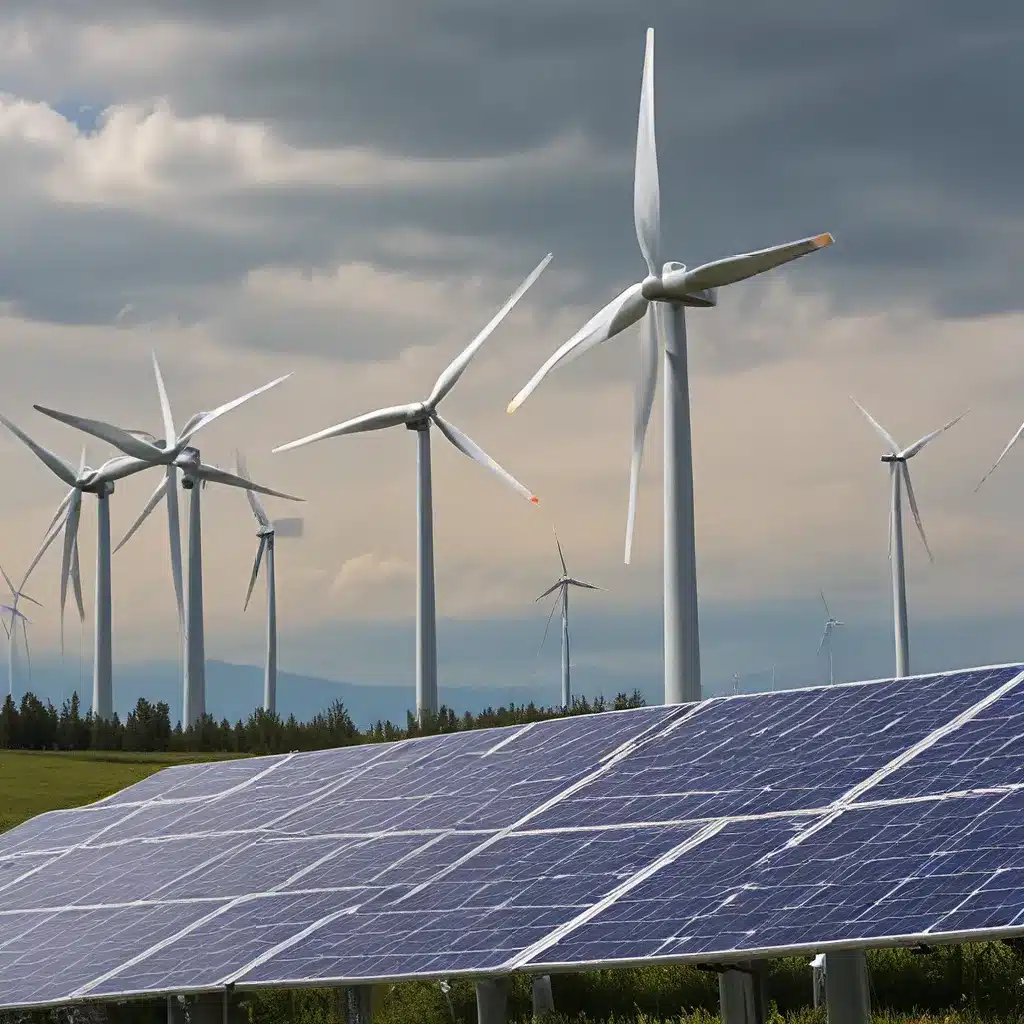
Harnessing the Power of the Future Grid
If you’re like me, the thought of our nation’s electrical grid probably doesn’t top your list of daily concerns. After all, we’ve grown so accustomed to the reliable delivery of electricity that it’s easy to take it for granted. But the truth is, our power infrastructure is facing some major challenges – and the solutions will shape the future of renewable energy and the smart grid.
You see, America’s economy, national security, and even the health and safety of our citizens depend on the reliable delivery of electricity. Our electric grid is an engineering marvel, with over 9,200 generating units and more than 1 million megawatts of capacity connected by over 600,000 miles of transmission lines. It’s a vast, complex ecosystem of asset owners, manufacturers, service providers, and government officials all working together to keep the lights on.
But the grid is aging, and it’s being pushed to do more than it was originally designed for. Extreme weather events, the rise of renewable energy, and the growing demand for electricity are all putting a strain on an infrastructure that was built decades ago. That’s where grid modernization comes into play – the effort to transform and improve our energy systems using cutting-edge technologies, equipment, and controls.
Modernizing the Grid for a Renewable Future
The key to grid modernization is making the system “smarter” and more resilient. This involves integrating advanced sensors, digital meters, automated controls, and two-way communication technologies that allow the grid to operate more efficiently and respond to changes in real-time.
Phasor Measurement Units (PMUs), for example, enable grid operators to better assess the stability of the system. Advanced digital meters give consumers more information and automatically report outages. Automated feeder switches can re-route power around problems. And energy storage batteries can store excess renewable energy and make it available when demand is high.
These smart grid technologies don’t just make the system more reliable – they also unlock new possibilities for renewable energy. By improving the grid’s ability to integrate and manage variable sources like wind and solar, modernization efforts are helping to accelerate the transition to a clean energy future.
Renewable energy solutions like solar and wind are becoming increasingly cost-competitive, and their adoption is surging across the country. But integrating these intermittent resources onto the existing grid poses significant challenges. Smart grid technologies give the system the flexibility and adaptability it needs to accommodate more renewable generation.
Navigating the Challenges of Grid Modernization
Of course, transforming a century-old power infrastructure is no easy feat. Grid modernization efforts face a number of technical, regulatory, and financial hurdles. Upgrading aging equipment, implementing new communication protocols, and ensuring cybersecurity are just a few of the complex challenges utility companies and policymakers must address.
There’s also the question of who will foot the bill. Modernizing the grid requires massive investments in new technologies and infrastructure. Utilities are working to secure funding through rate hikes, government grants, and other sources, but the costs are substantial. And consumers will ultimately feel the impact, whether through higher electricity prices or the benefits of improved reliability and efficiency.
Despite these challenges, the potential rewards of grid modernization are immense. A smarter, more resilient grid can reduce the frequency and duration of power outages, improve storm resilience, and enable faster service restoration. Consumers will have better visibility into their energy usage and more control over their costs. And utilities will benefit from reduced operational expenses, increased integration of renewables, and enhanced security.
Charting the Path to a Sustainable Energy Future
As the Office of Electricity (OE) at the U.S. Department of Energy leads the charge on grid modernization, I can’t help but be excited about the possibilities. This critical work involves a coordinated, public-private effort to develop the next generation of grid technologies, tools, and techniques.
Through programs focused on areas like smart grid research and development, advanced power electronics, and grid-scale energy storage, OE is driving innovation that will shape the future of our electricity system. And with legislative mandates like the Energy Independence and Security Act of 2007, the government is providing the policy and financial support needed to make this transformation a reality.
Of course, the road ahead is not without its uncertainties. Ongoing research and evolving technologies mean that the conclusions we draw today may change tomorrow. But that’s part of the thrill – we’re on the cusp of a revolution in the way we generate, distribute, and consume electricity.
As we navigate this complex landscape, I believe it’s crucial that we remain vigilant, curious, and open-minded. By closely following the latest developments, weighing different perspectives, and embracing the possibilities of the future grid, we can all play a role in shaping a more sustainable and resilient energy future.
After all, the decisions we make today will reverberate for generations to come. So let’s roll up our sleeves, dive into the details, and harness the power of renewable energy and grid modernization to build the smart grid of the future. Who knows what exciting innovations and breakthroughs lie ahead?

